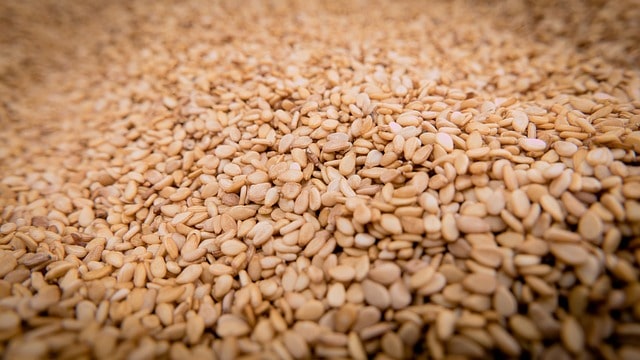Do Sesame Seeds Go Bad?
Sesame seeds, like other seeds and nuts, are a household staple valued for their nutty flavor and high nutrient content. They are commonly sprinkled on bread like bagels and hamburger buns, sushi rolls, salad, and many Asian dishes. But a question many may ponder is whether these tiny seeds can go bad and, if yes, how long they last, and how can one tell if they are not suitable for consumption. Let’s delve into the topic and find out more about the shelf life, storage, and spoilage of sesame seeds.
Understanding the Shelf Life of Sesame Seeds
Seeds, although seemingly dry and durable, have a shelf life, no different than any other food product. Generally, sesame seeds bought from a store come with a ‘best before’ or ‘use by’ date, which can give you some insight into their longevity. However, these dates are more often a conservative estimate, and with proper storage, sesame seeds could last well beyond these suggested timelines.
Freshness Factors for Sesame Seeds:
Packaging: Unopened and sealed packaging can extend the life of sesame seeds by preventing exposure to moisture and other contaminants.
Temperature: Cooler temperatures generally prolong the shelf life, with refrigeration being an excellent option for long-term storage.
Moisture: Any moisture can speed up the spoiling process by encouraging mold growth.
Expected Shelf Life:
Pantry: In the pantry, sesame seeds can last between 3-6 months near or slightly past the ‘best before’ date when kept in their original packaging or in an airtight container.
Refrigerator: Refrigeration can extend this lifespan to a year, or even more in some cases, if the seeds are stored correctly.
Freezer: For the longest shelf life, freezing sesame seeds in an airtight container can keep them fresh for over two years.
How to Store Sesame Seeds Properly
Storing sesame seeds the right way can make a significant difference in preserving their taste and preventing them from going bad.
Optimal Storage Methods:
Airtight Containers: The best way to store sesame seeds is in airtight containers, which prevents moisture and air from spoiling the seeds.
Cool Places: A pantry or cupboard away from direct sunlight and heat is ideal for short-term storage.
Refrigeration: For long-term storage, place the airtight container in the refrigerator.
Freezing: If freezing sesame seeds, ensure that the container is not only airtight but also moisture-proof.
Additional Tips:
- Be sure the sesame seeds are completely dry before storing to avoid any moisture buildup.
- Prevent sesame seeds from taking on the flavors of other foods by keeping them sealed when stored in the fridge or freezer.
- Regularly check your stored sesame seeds for any signs of spoilage before use.
Detecting Spoiled Sesame Seeds
While sesame seeds don’t spoil as easily as perishable foods, they can go bad. Here’s how you can detect spoiled seeds:
Signs of Spoilage:
Rancid Smell: A sharp, unpleasant odor is a primary indicator that sesame seeds have turned rancid.
Taste Test: If they’re not aromatic or they leave a bitter taste, they shouldn’t be eaten.
Visual Changes: Discoloration or mold growth are visual cues that seeds are no longer good.
Texture: A noticeable shift to a mushy or damp texture is also a clear sign of spoilage.
Health Implications
Consumption of spoiled sesame seeds can be ill-advised as they may contain harmful bacteria that could lead to foodborne illnesses. Therefore, it’s crucial to trust your senses; any doubt means the seeds should be discarded.
Maximizing Sesame Seeds’ Quality
To make the most out of your sesame seeds and ensure they retain their flavor and nutrients, consider the following:
Recommendation for Use:
Toast Before Using: Toasting sesame seeds before using them in recipes or as garnish can enhance their flavor immensely and bring out their natural oils.
Stirring: Regularly stirring the seeds within their storage container can help maintain an even distribution of any natural oils and prevent clumping.
Flavor Preservation:
- A good practice is to use smaller quantities of seeds quickly rather than buying in bulk and storing them for excessively long periods.
- Using vacuum-sealed bags, if available, can extend freshness, as it removes air exposure entirely.
Collection of Sesame Seed Recipes
Once you’ve made sure your sesame seeds are fresh, the next wonderful challenge is using them to make an array of delicious recipes. Here’s a compilation of some easy and flavorful ways to sprinkle these tiny treasures into your everyday cooking.
Savory Selections:
Sesame Seed Crusted Tofu: Create a crunchy nutritious crust on tofu by rolling it in sesame seeds before baking.
Lemon Sesame Salad Dressing: Mix freshly squeezed lemon juice with sesame seeds for a tangy topping to any salad.
Traditional Tahini: Grind sesame seeds with oil to create this Mediterranean staple, perfect for hummus and other spreads.
Sweet Treats:
Sesame Seed Brittle: Melting sugar and incorporating sesame seeds can result in a delectably crunchy candy.
Black Sesame Ice Cream: Incorporating ground sesame seeds into ice cream base offers a unique and striking dessert.
Sesame Seed Buns: For a nutty twist to baked goods, adding sesame seeds to your dough can provide that extra texture and flavor.
Whether you want to augment your dishes or make sesame seeds the star ingredient, there’s no shortage of ways to be creative and make the most of their characteristics.
Conclusion
In summary, sesame seeds can go bad, but with meticulous care in their storage and handling, they can last a very long time. It’s vital to heed the signs of spoilage and practice good storage habits to prevent wasting not just the seeds themselves, but also the effort and resources that went into producing this magnificent, versatile ingredient. Making the right choices in your kitchen ensures great taste, waste reduction, and respect for the food on our tables.


Trackbacks/Pingbacks